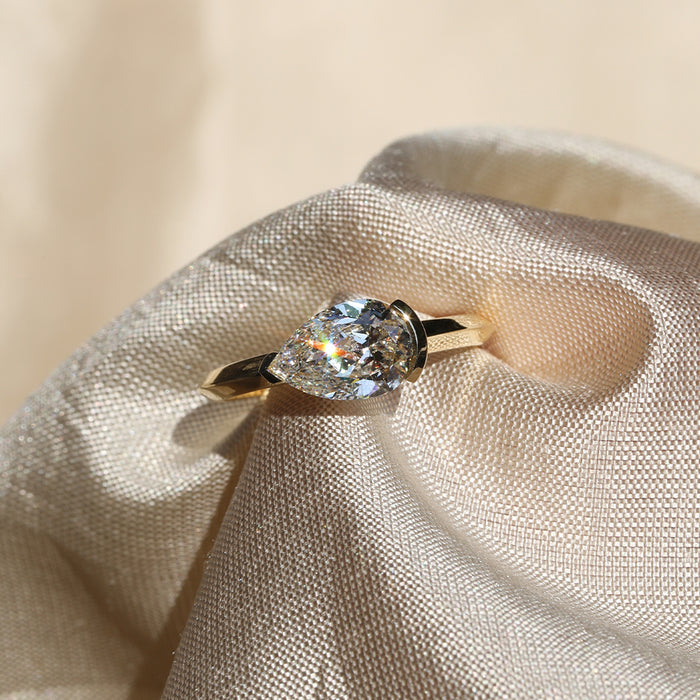
The Pear Cut Diamond Guide
ReadWith its distinctive teardrop shape, the pear cut diamond has a captivating history dating back to the 15th century yet it is very much a popular choice for a modern engagement ring.
This definitive guide provides an insight into the proportions of a pear cut diamond, what to look out for and ideas to inspire your pear cut diamond engagement ring.
What is a Pear Cut?
The pear cut diamond brings together the best of both round and marquise cuts. The rounded belly of the stone tapers to a point at one end, and the diamond is cut with 57 or 58 facets for optimum fire and sparkle.
The pear cut diamond's history can be traced back to the 15th century with the 'pendeloque' cut and its symmetrical teardrop shape. With the invention of brilliant faceting, the modern pear cut was born.
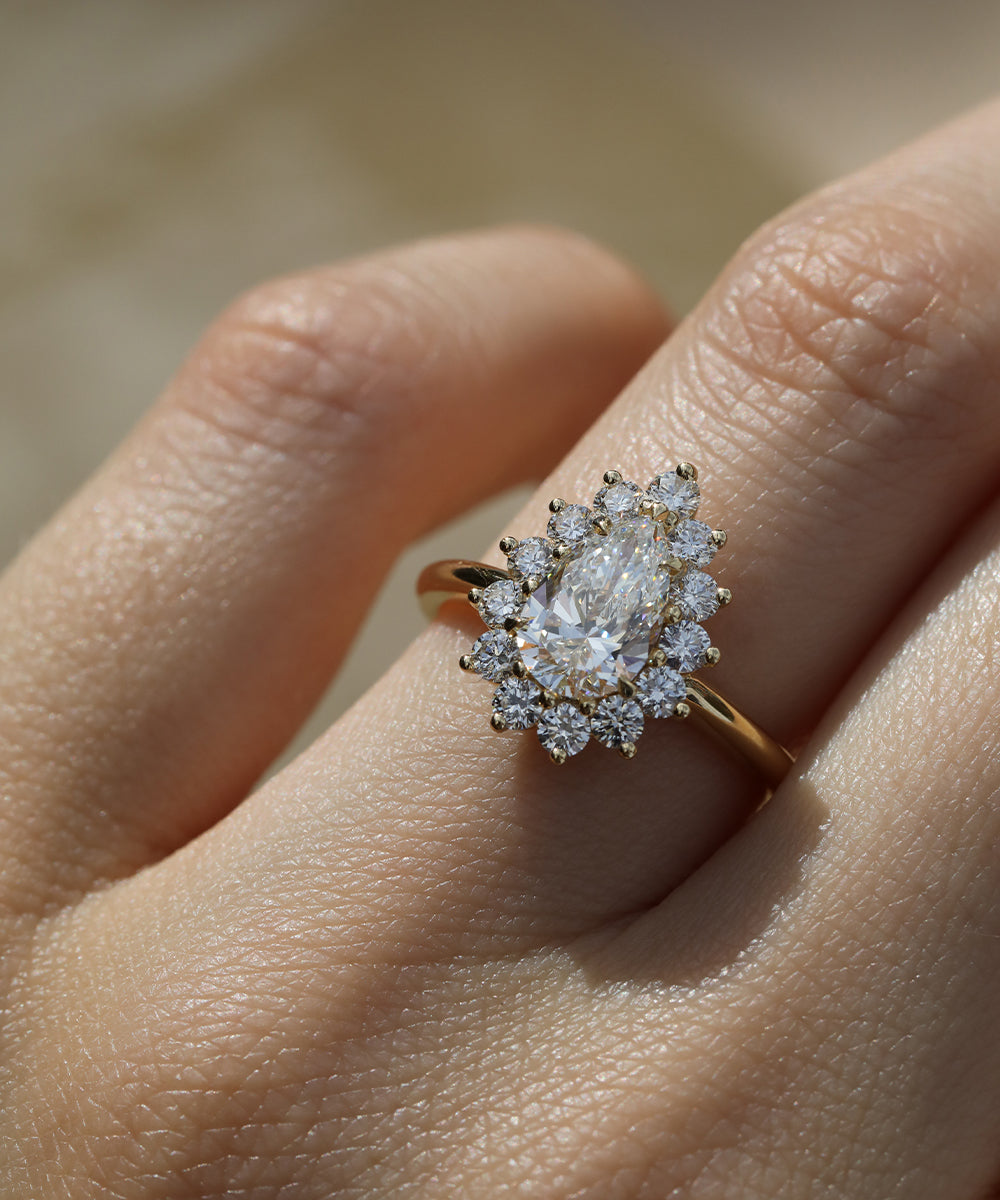
Why choose a pear cut diamond?
Pear cuts are versatile for many reasons. With such a long history, they feel equally at home in a vintage-inspired engagement ring as in a bold and contemporary ring design.
Their shape is also particularly powerful - fluid and tapered, a pear cut draws the eye around the stone and out with an elongating effect on the hand.
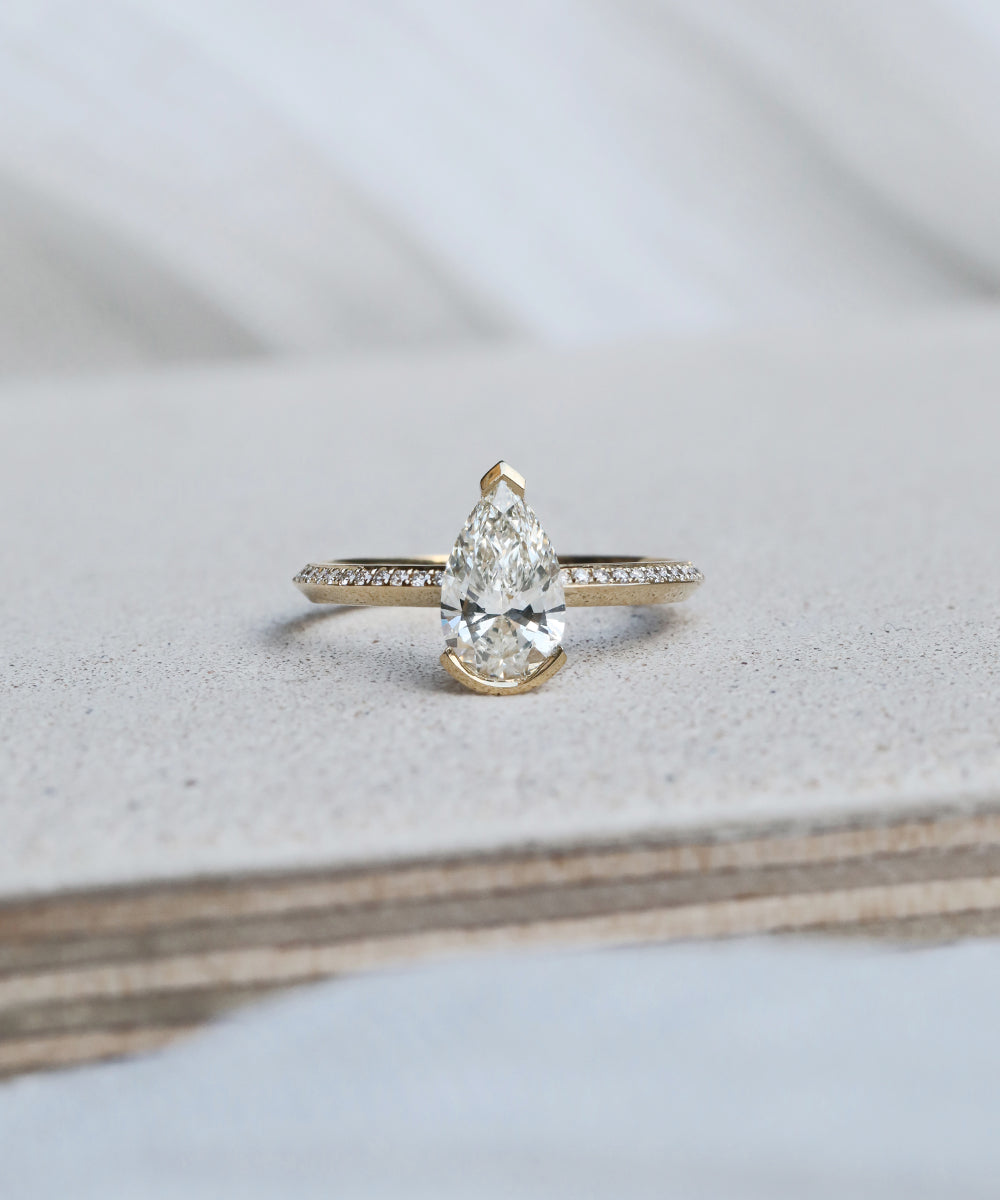
WHAT SIZE IS A 1CT PEAR CUT?
As carat is a unit of weight, a 1ct diamond can measure differently depending on the spread of the stone. However, you can expect an averagely proportioned 1ct pear cut diamond to measure 9.05×5.45mm, and 2ct to measure 11.4×6.9mm.
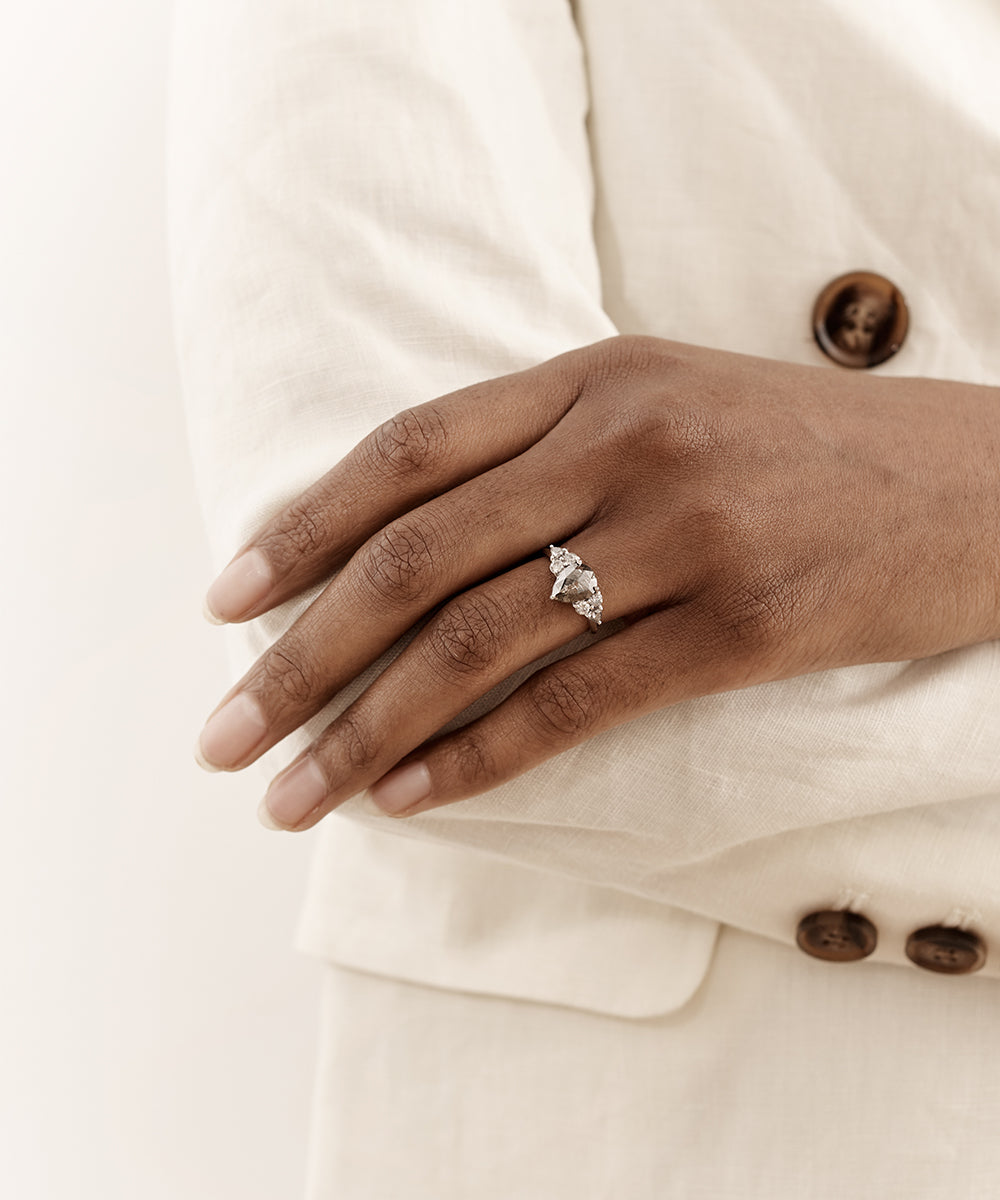
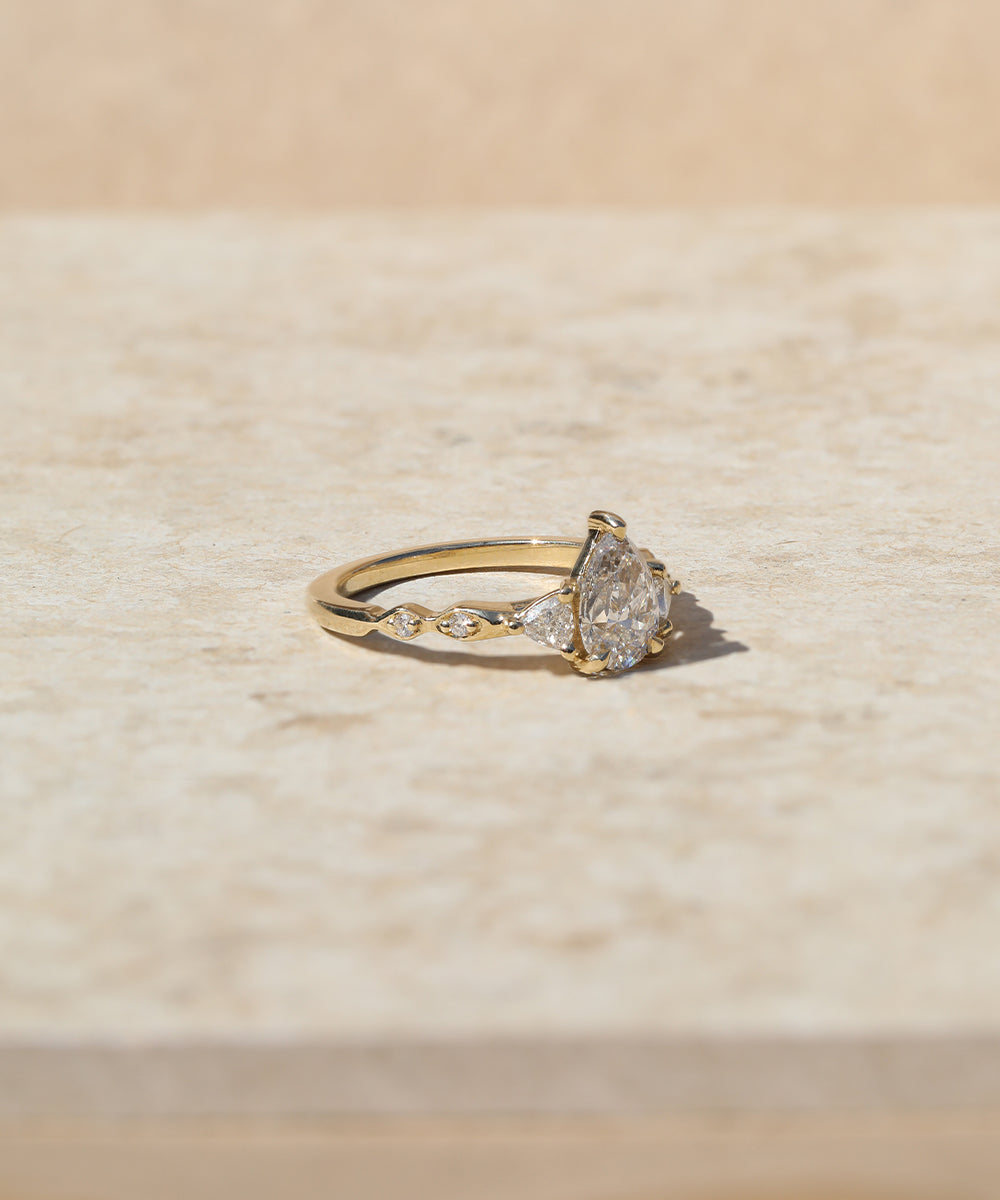
What Should I Look Out For?
Symmetry is key here, and the two halves of the pear cut should mirror each other very closely. This impacts the diamond's visual appeal as well as its brilliance. Look for ‘excellent’ or ‘very good’ symmetry rating on your GIA report to ensure the diamond is of the highest quality.
What Proportions should I aim for?
Requiring a fine balance of proportions, there are several factors to consider in a pear cut’s shape. An overall length-width ratio between 1:1.50 and 1.75 generally creates a well-balanced pear shape.
A softer curve at the base of the pear (the shoulders) and gently rounded wings (either side of the tip) will also help to create an attractive silhouette. However, there are no hard-and-fast rules for the pear cut’s proportions. Assess what shape best suits your design from an image of the diamond and allow yourself to be guided by feeling.
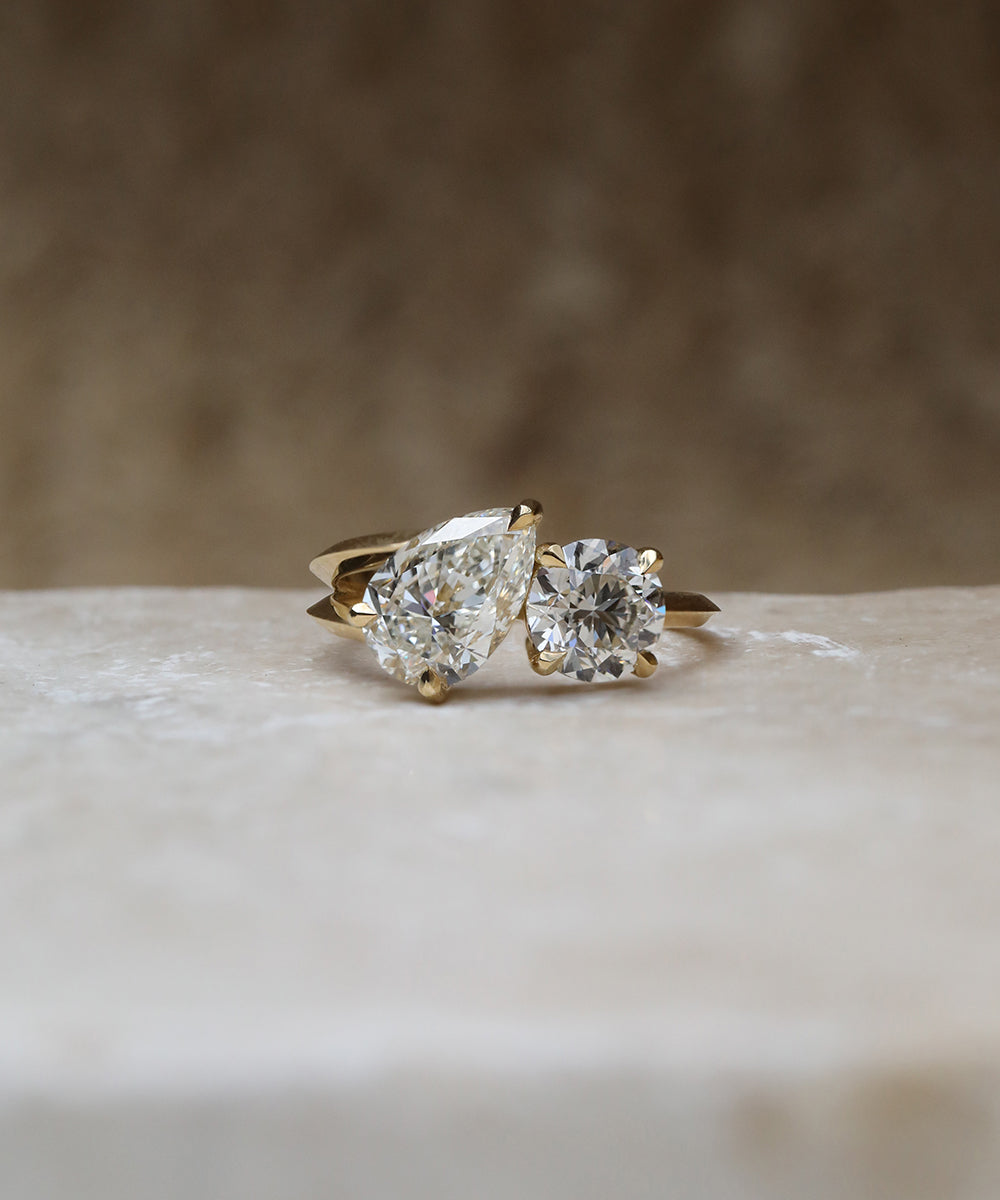
The 'Bow Tie' Effect
As with other brilliant cut diamonds that are longer in length, it’s important to keep an eye out for the much discussed ‘bow tie’ effect. It’s a darker band across the stone of shadows within the facets.
It will be visible from a photo but not the diamond’s accompanying report, which is why its so important to see imagery before making your purchase.
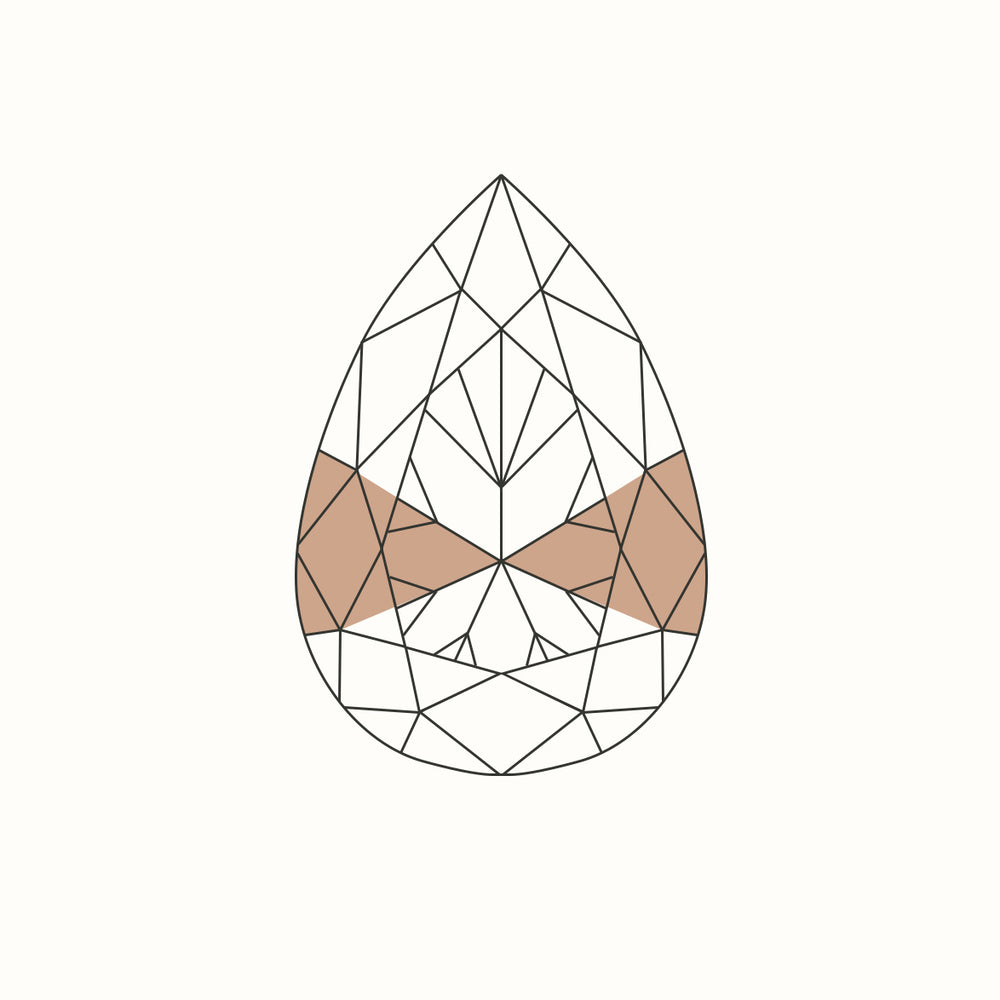
Which Setting Style Works Best?
For those with an active lifestyle, two variations on a classic barely-there setting style will offer increased protection to the vulnerable tip of a pear cut diamond.
The first is adding a V setting at the tip to encase the full tip of the diamond in a rubover. The second is to opt for 5 claws instead of just 3 for additional security. And, as always, rubover settings are a beautiful option that protect the stone around the entire girdle.
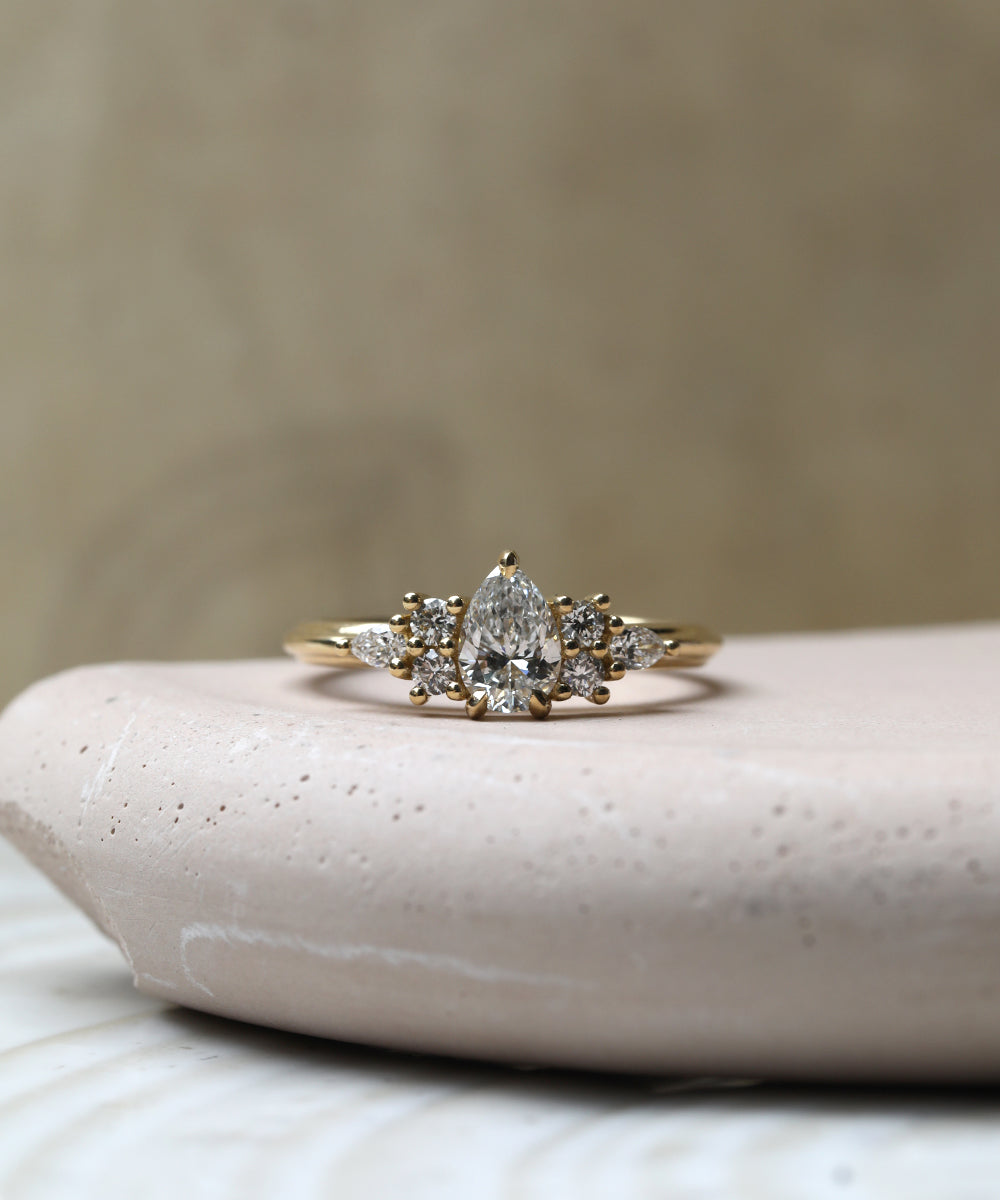
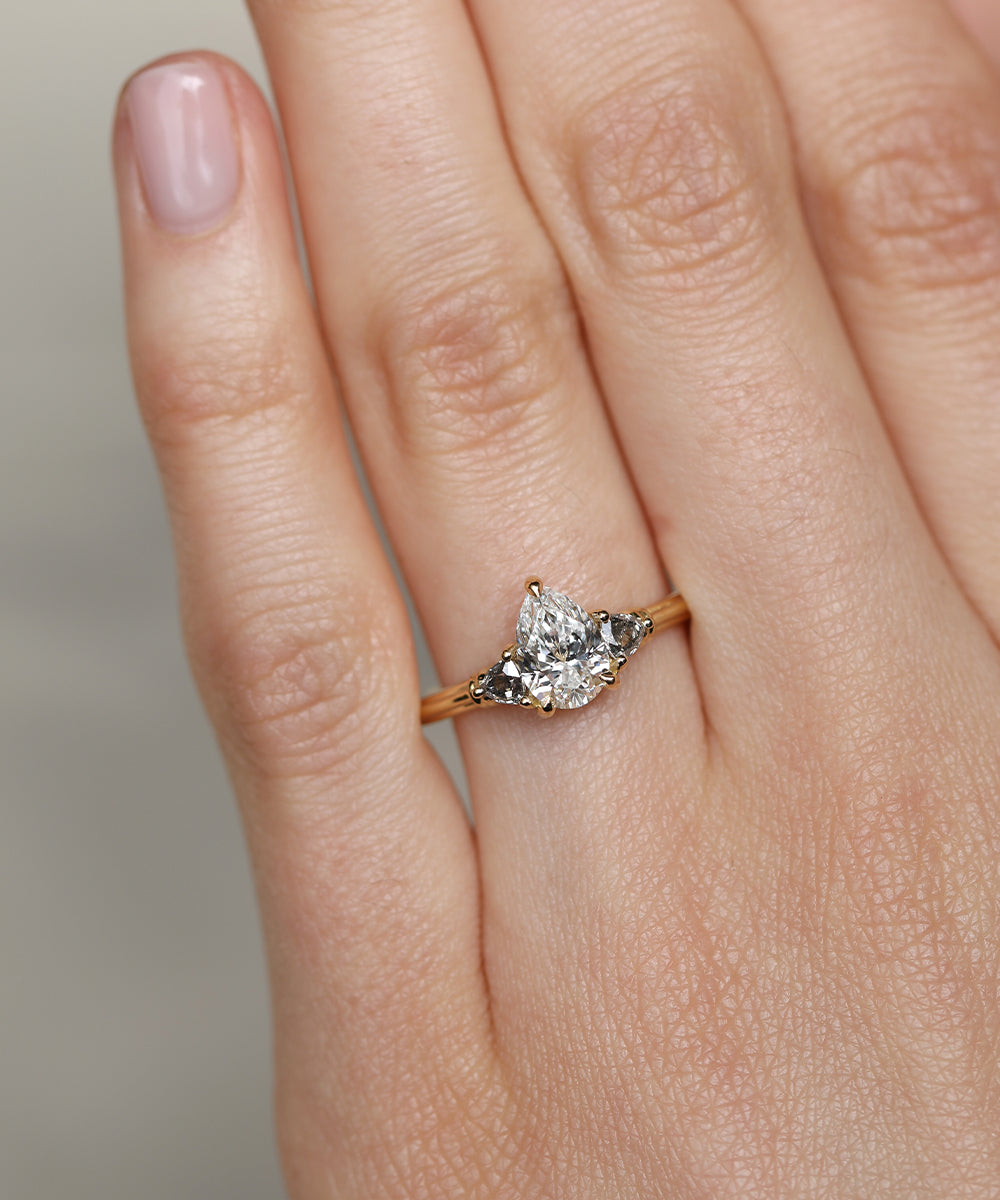
Inspiration
Bulbous on one end and pointed at the other makes pear cut diamonds perfect for an unexpected east to west setting. We’ve seen this design grow popular with emerald and radiant cuts, but pear cut diamonds offer a fresh take on it.
Opt for a classic knife edge band, like our Aisling Ring, or follow the lead of our Voluptas ring, whose chunky asymmetrical band is a true showstopper.

















